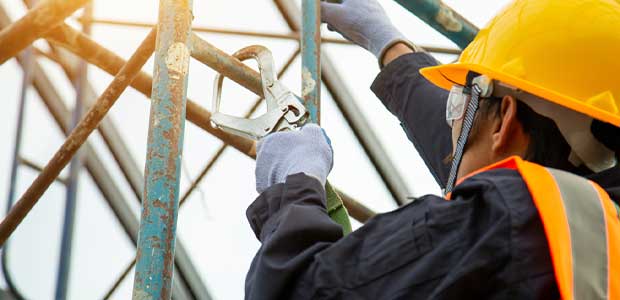
Survey Results Show Data on Falls from Heights
Some of the topics the respondents were surveyed on were height of the fall, cause and if the employer made changes.
- By Alex Saurman
- Aug 31, 2022
In 2020, 49,250 workers were injured from a fall to a lower level, according to the Bureau of Labor Statistics. That same year, 645 workers died from falls to a lower level.
In the construction industry, falls lead to the most deaths. In 2020, 351 workers in the construction industry died from a fall to a lower level, according to OSHA.
The CPWR – The Center for Construction Research and Training wanted to learn more about these falls and started a survey. Supported by the American Society of Safety Professionals (ASSP) and a few other organizations, the survey asked 671 people who “experienced, witnessed or investigated a workplace fall incident” about the fall, according to the survey results. The results were published in August.
Over 27 percent of respondents said the “primary cause” of the fall was “insufficient or ineffective planning." This cause ranked the highest of all the causes, with unused but provided fall protection ranking second at 21.7 percent. Respondents could choose up to three answers.
Nearly half of the respondents reported that no fall protection was used in the fall, the report said. Personal fall arrest systems were used in 31.3 percent of the falls and guardrails in 16.1 percent of the falls.
Over 75 percent of the respondents reported they have seen their employer “always” or “frequently” provide PPE, but only 57.9 percent said the PPE is “checked for fit” and that it “fits all workers properly," according to the survey results.
“It’s important to remember that all falls are preventable, and that drives us to collect better information that can foster operational solutions,” said Jessica Bunting, MPH, director of CPWR’s Research to Practice (r2p) in a press release from ASSP.
After a worker experienced a non-fatal fall, 43 percent of respondents said their company made “significant or sustained changes,” and almost an equal number, 42.7 percent, said no action was taken. When a worker experienced a fatal fall, 53.7 percent of respondents said their employers made changes, and 16.7 percent said they did not.
“While data has been available on the types and rates of fatal and non-fatal falls, we need more information on the causes of those falls,” said Thomas Kramer, P.E., CSP, chair of the Z359 committee said in the press release. “These new insights expand our knowledge so we can strengthen standards and ultimately prevent injuries and save lives.”
To read more about the results, visit ASSP.org.
To learn more about mitigating the risks associated with falls, listen to OH&S SafetyPod.
About the Author
Alex Saurman is a former Content Editor for Occupational Health & Safety,who has since joined OH&S’s client services team. She continues to work closely with OH&S’s editorial team and contributes to the magazine.